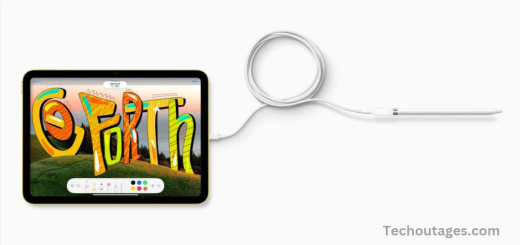Apple Explains Why It Hasnt Released A Touchscreen Mac
The first reviews of the iPad Pro are now available, and they emphasize key features such as the new OLED displays, the powerful M4 chip, and the limitations of iPadOS as an operating system. In an interview with The Wall Street Journal, Apple’s marketing executive, Tom Boger, shared insights into how the iPad compares to the Mac and addressed the question of whether Apple might ever release a touchscreen Mac.
Boger, Apple’s vice president of Mac and iPad product marketing, explained to Joanna Stern that Apple views the two devices not as competitors but as complementary. The iPad is designed as a “touch-first device,” while the Mac, according to Boger, is intended for “indirect manipulation,” using a keyboard, mouse, or trackpad.
“We don’t see them as competing devices. We see them as complementary devices,” said Boger. He emphasized that the iPad’s primary function is as a touchscreen device, while the Mac serves a different purpose, optimized for a traditional computing experience.
This led to the inevitable question: will Apple ever release a touchscreen Mac? Despite repeated attempts by Stern to get a definitive answer, Boger remained firm in his stance that the two products serve different functions. “MacOS is for a very different paradigm of computing,” he explained, noting that many customers own both devices and use the iPad as a way to extend their work from a Mac. Apple’s Continuity feature, he added, makes it easy to work seamlessly across both devices.
When asked if Apple might ever reconsider its stance on touchscreen Macs, Boger gave a diplomatic response: “Oh, I can’t say we never change our mind.”
You can read the full review by Joanna Stern over at The Wall Street Journal.
Complementary Devices, Not Competitors
Boger explained that Apple doesn’t view the iPad and Mac as competing products. Instead, the company sees them as complementary tools designed for different types of computing experiences. The iPad, according to Boger, is a “touch-first device,” optimized for direct interaction via its touchscreen. On the other hand, the Mac is designed for “indirect manipulation,” relying on traditional input methods such as a keyboard, mouse, or trackpad.
“We don’t see them as competing devices. We see them as complementary devices,” Boger said. He emphasized that while the iPad allows for a more immersive, touch-based experience, the Mac provides a more traditional computing setup ideal for tasks that benefit from a keyboard and mouse or trackpad.
Why Not a Touchscreen Mac?
The question of a touchscreen Mac has been raised by many in the tech community, especially as other manufacturers have embraced hybrid devices with both touchscreen and traditional input capabilities. However, Apple remains steadfast in its decision to keep the two experiences distinct.
“MacOS is for a very different paradigm of computing,” said Boger. “It’s optimized for the kinds of tasks people do with a keyboard and mouse or trackpad, and that’s what makes the Mac experience unique.” He highlighted that many Apple users own both a Mac and an iPad and use the iPad to complement their work on the Mac, thanks to the seamless integration provided by Apple’s Continuity feature, which allows users to move between devices effortlessly.
May you also like it:
iPad Mini 7 Rumors: What to Expect from Apple’s Next Compact Tablet
These Simple Accessories Will Elevate Your Macbook Experience
Use Hrv With Apple Watch And Iphone
Here How To Block Texts On Iphone In A Few Taps
The Future of Touch on Macs
When asked directly whether Apple might ever change its position on touchscreen Macs, Boger’s response was cautious but open-ended. “Oh, I can’t say we never change our mind,” he said, leaving a small window of possibility for future shifts in the company’s approach. However, he made it clear that there are no immediate plans to introduce a touchscreen Mac, as Apple believes the current Mac and iPad setups best serve the needs of their respective users.
A Distinct User Experience
Boger’s comments underscore Apple’s commitment to providing distinct, optimized experiences for different types of users. The iPad is meant for those who prioritize touch interaction, mobility, and simplicity, while the Mac continues to cater to users who require the precision and flexibility of traditional computing.
For now, it seems that Apple will maintain the separation between its Mac and iPad product lines, each offering a unique experience that appeals to different use cases. Whether this will change in the future remains uncertain, but for the time being, Apple’s vision is clear: the Mac and iPad are complementary tools, not interchangeable devices.
Apple’s stance on touchscreen Macs, then, is not just about avoiding overlap with its own product lineup, but about creating distinct user experiences that best serve the needs of customers across different computing contexts. As technology continues to evolve, we may see Apple further refine these boundaries, but for now, the company remains confident in its current approach.
Frequently Asked Questions
Why hasn’t Apple released a touchscreen Mac?
Apple believes that the Mac and iPad serve different functions and are optimized for distinct computing experiences. The iPad is a “touch-first device” designed for direct interaction with a touchscreen, while the Mac is intended for “indirect manipulation,” using a keyboard, mouse, or trackpad. Apple views the two products as complementary, not competing.
Is Apple planning to release a touchscreen Mac in the future?
While Apple’s Vice President of Mac and iPad Product Marketing, Tom Boger, did not rule out the possibility entirely, he emphasized that there are no current plans for a touchscreen Mac. He suggested that the Mac and iPad are meant to offer different experiences, with the Mac focusing on traditional input methods and the iPad providing a touch-based interface.
What is the difference between a Mac and an iPad in terms of user experience?
The Mac is designed for more traditional computing tasks that benefit from a keyboard, mouse, or trackpad. It’s optimized for productivity and tasks that require precision. In contrast, the iPad offers a more tactile, touch-first experience, ideal for users who prefer direct interaction with their devices. Apple sees these differences as a way to provide users with complementary tools.
What does Apple’s Continuity feature have to do with this?
Apple’s Continuity feature allows users to seamlessly transition between their Mac and iPad. For example, you can start a task on your Mac and pick it up on your iPad, or vice versa. This integration highlights how Apple envisions the iPad as a complementary tool to the Mac, providing flexibility for users who need both devices for different tasks.
Does Apple believe touchscreen Macs would offer any benefits?
According to Apple, macOS is designed for a “different paradigm of computing,” which is best suited to indirect input methods such as a keyboard, mouse, or trackpad. Apple believes this offers a better experience for users who need precision and flexibility in their work. While touchscreen technology could potentially be beneficial for some tasks, Apple’s focus is on providing the best experience through existing input methods.
Could Apple ever change its stance on touchscreen Macs?
While Boger did not wholly rule out the possibility of a touchscreen Mac in the future, he suggested that Apple remains focused on offering distinct experiences for the Mac and iPad. However, he did leave the door slightly open, stating, “Oh, I can’t say we never change our mind.” This implies that Apple might reassess the idea down the line if customer needs and technology trends evolve.
How does this decision compare to other companies’ approach to touchscreen devices?
Many other companies have embraced hybrid devices that feature both touchscreen capabilities and traditional input methods. However, Apple has taken a different approach by keeping the Mac and iPad distinct in terms of user experience. Apple’s philosophy centers around offering products that excel in their intended roles—Macs for traditional computing and iPads for a touch-first, mobile experience.
What does this mean for future Mac and iPad users?
For now, users will continue to rely on Macs and iPads as complementary devices. The Mac will remain a tool for more precision-driven tasks, while the iPad will serve as a versatile, touchscreen-focused device for tasks that benefit from direct interaction. Apple’s continued focus on improving both platforms suggests that each will evolve in ways that better serve their respective user bases.
Conclusion
Apple’s decision not to release a touchscreen Mac is rooted in its philosophy of providing distinct, optimized experiences for different types of computing. The company views the iPad and Mac as complementary, not competing, devices. The iPad is designed as a touch-first device, ideal for mobile, direct interaction. At the same time, the Mac remains focused on precision tasks that benefit from traditional input methods like a keyboard and trackpad.
By keeping the two experiences separate, Apple ensures that each device excels in its respective role. The Mac is optimized for productivity and tasks requiring a high level of accuracy, while the iPad caters to users who prioritize touch interaction and mobility.



